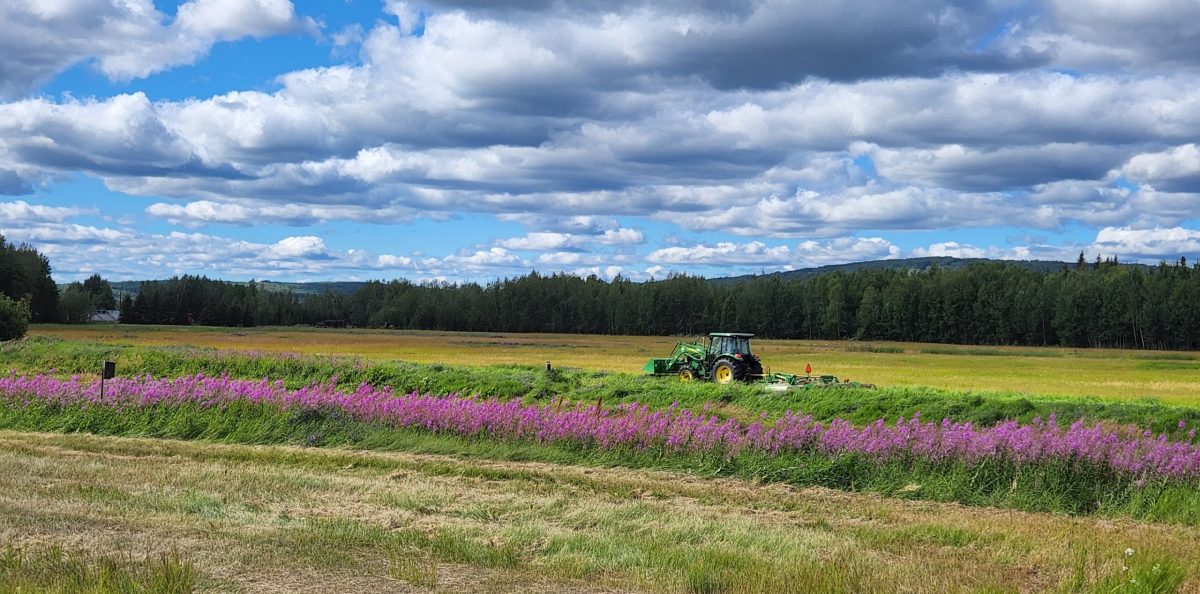The springtime brings many changes to Interior Alaska. Here at Creamer’s Field Migratory Waterfowl Refuge in Fairbanks, the skiers and dog mushers put away their skis and puffy coats to wait patiently for the next winter season. As the temperatures warm, the rapidly melting snow exposes bare ground and floods the sprawling fields, creating an ideal respite for thousands of birds from their grueling migration journeys as they venture towards their northern breeding grounds. The large spectacle of birds attracts travelers from all over the world who are eager to experience the splendor of the refuge. As the masses of birds feed on the leftover and spread grain in the fields, refuge management heeds the incoming warmer months and prepares their cultivation for migration.
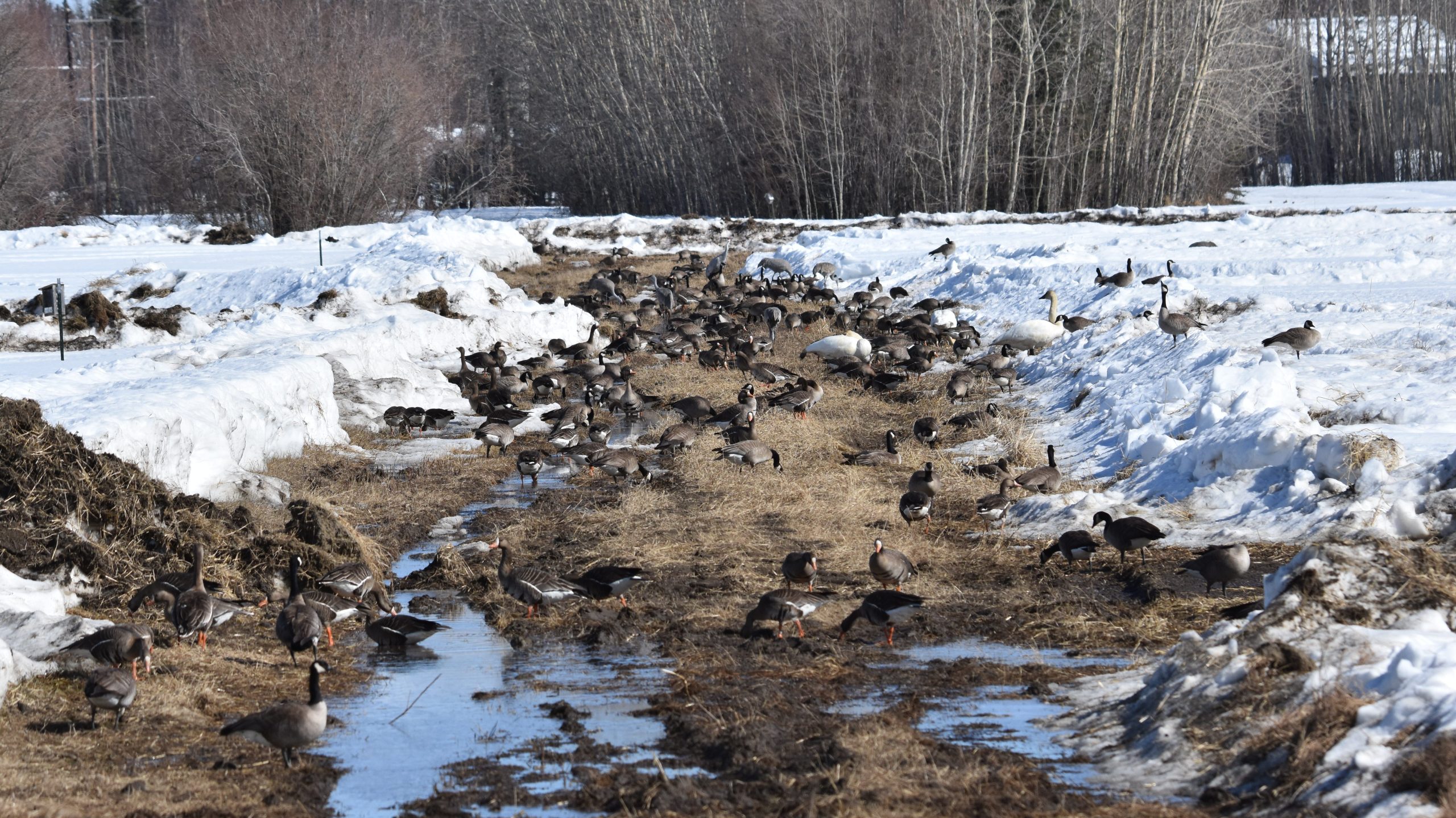
Early Dairy Farming
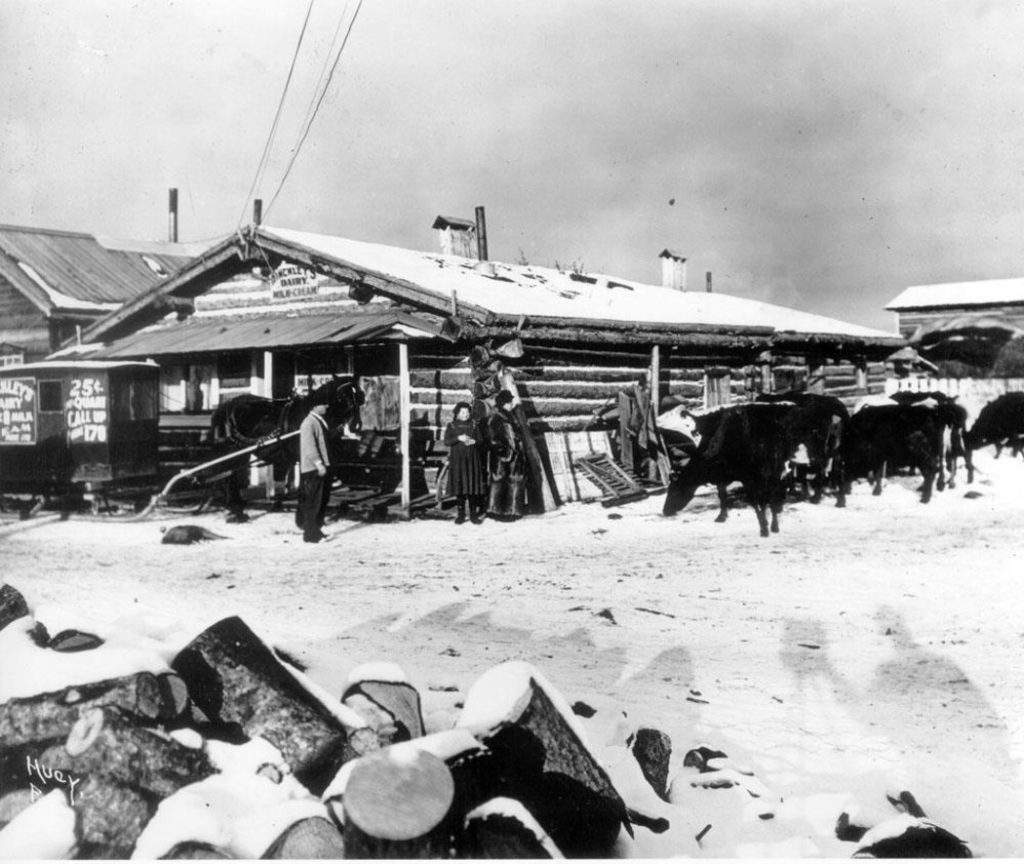
Farming interest took off in the Interior in the early 1900’s after the discovery of gold and the area flooded with prospectors expecting to strike it rich. As the town of Fairbanks grew, the increasing numbers of horses and livestock required grain feed. Thankfully, the Tanana Valley’s flood plain and long summer sun made farming possible and profitable. The town’s newspaper, the Fairbanks News, found a “Possibility of Valley for Dairy Farming” when a local grower sold three tons of oat hay to a local dairy farmer at $75 per ton. In contrast to $75 per ton for local feed, freight cost for feed was still a tremendous $165 a ton and shipping was limited to the summer months when the river was ice-free for riverboats. In the summer of 1904 seeing the more favorable agricultural conditions and profit in Fairbanks, the Hinckley family moved from Nome with their dairy cows. Charles and Belle Hinckley established their summer grazing for their cows at the current refuge site, then a natural open sedge wetland of about 60 acres called Murray Meadows, and a winter dairy location in Graehl.
In 1908, the Hinckley’s bought the 327-acre summer grazing homestead and established their dairy farm. After 28 years of dairy farming, the Hinckley’s eventually sold the dairy to Charlie and Anna (sister of Belle Hinckley) Creamer, who began modernizing the operation.
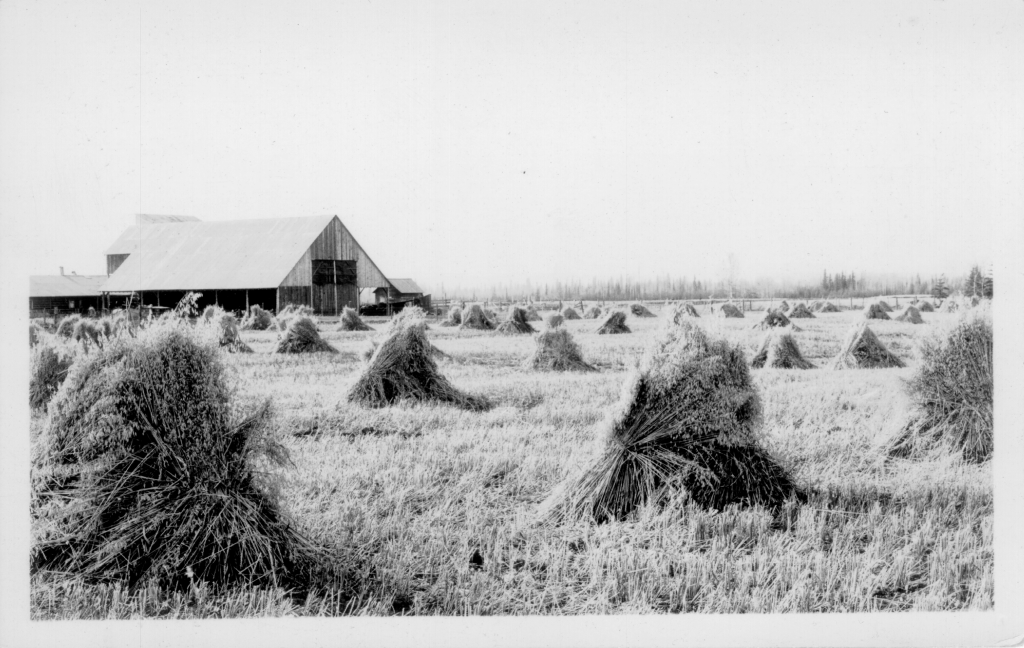
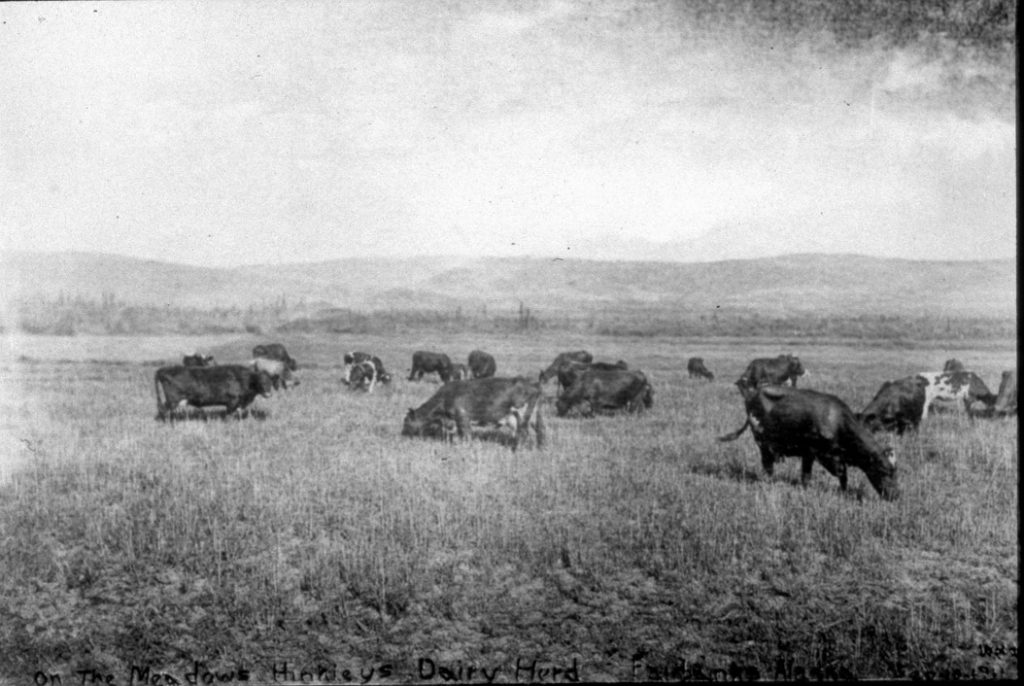
The long Fairbanks winters meant that each cow required at least three tons of hay for sustenance, equating to thousands of pounds for the herd. With local feed being $75 per ton, the Hinckley and Creamer families cleared additional acres to plant oats and harvest the hay for their herd. Horse drawn plows and reapers, and eventually tractors were utilized to produce and harvest the hay and silage.
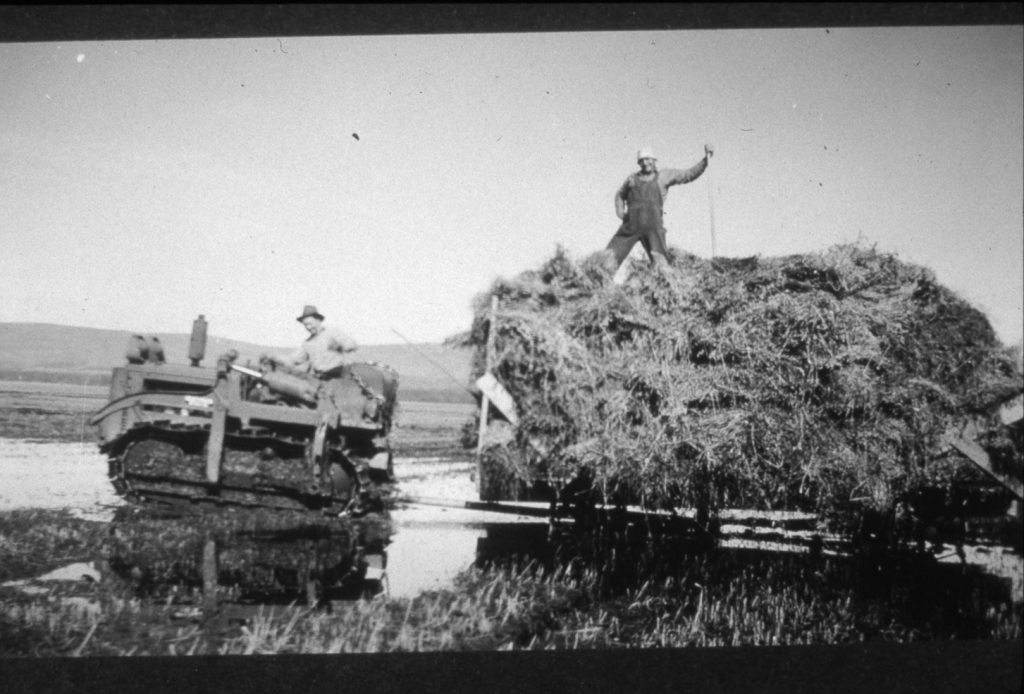
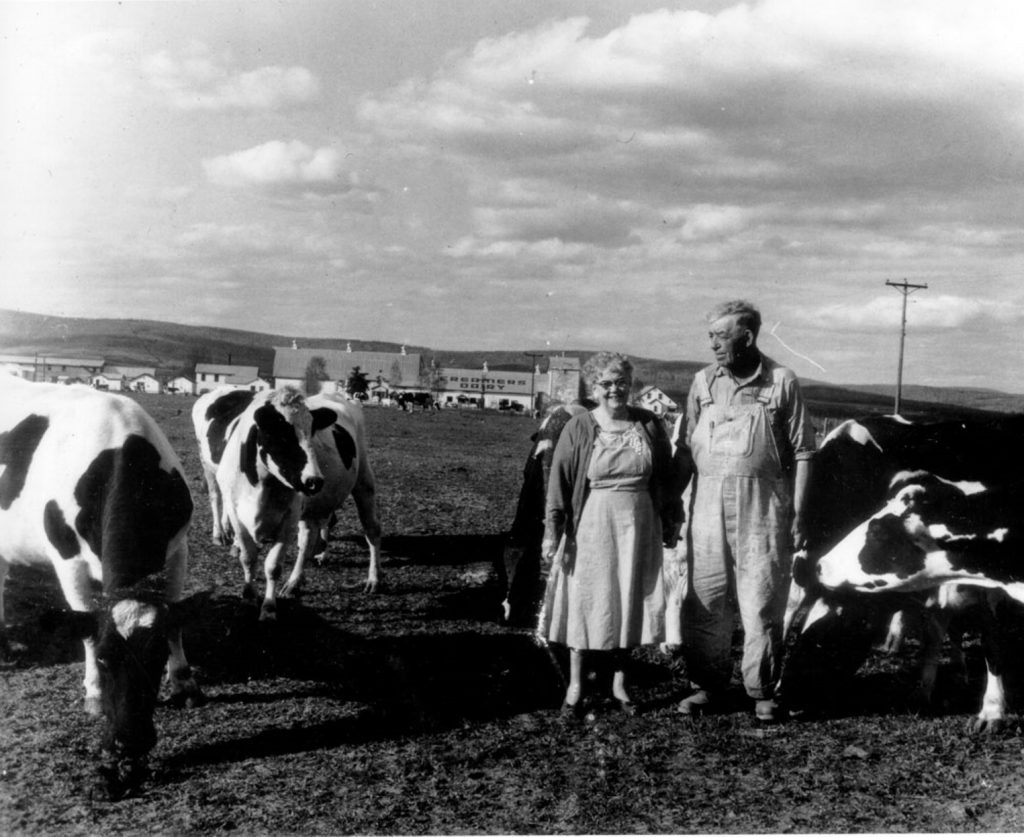
With their growing operation throughout the 30’s and 40’s, the Creamer’s began cutting more trees and opened more land including seasonally dry lake beds for tilling. As the demand and profits grew, the Creamers added modern dairy equipment and built larger structures in adding the Iowa Louden-style barns for the cows and feed storage. The largest barn still standing today was designed with a 10-foot taller loft to accommodate 165 tons of loose hay. After nearly four decades in the business, the aging Creamer family and the government subsidizing of dairy products prompted the local dairy to cease operations by 1966.
Migrations during the Dairy Days
Murray Meadows was a natural open area with wetlands that were attractive to many birds. Throughout the dairy days, the expanded open farm fields and agricultural waste grain continued to attract migratory birds. Regionally, the birds arriving at the dairy were a welcome sign of winter’s end and many from the community came to view the massive flocks. In the 1960’s when the Creamer’s decided to sell the dairy and with the potential for land development looming, Charlie Creamer appealed to the community to save the land as a natural space.
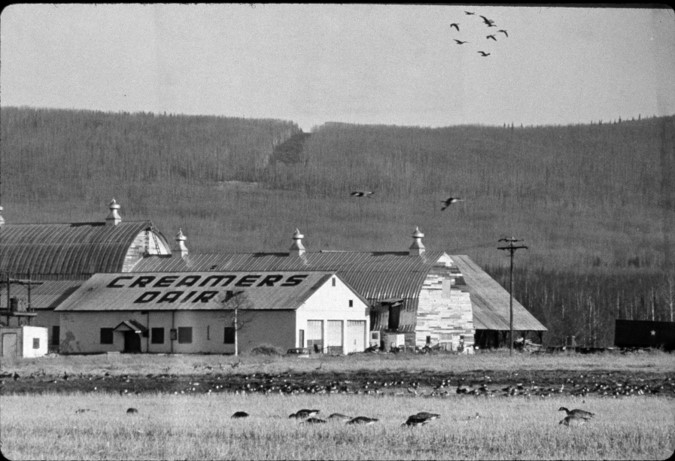
The community answered the call by coming together in 1967 to raise funds to purchase an option on the property and hold the land while the state coordinated the purchase of the land in 1968. In 1979, the Creamer’s Field Migratory Waterfowl Refuge was officially designated as a state wildlife refuge and put under the management of the Alaska Department of Fish and Game (ADF&G).
Cooperative Agreement and Refuge Improvements
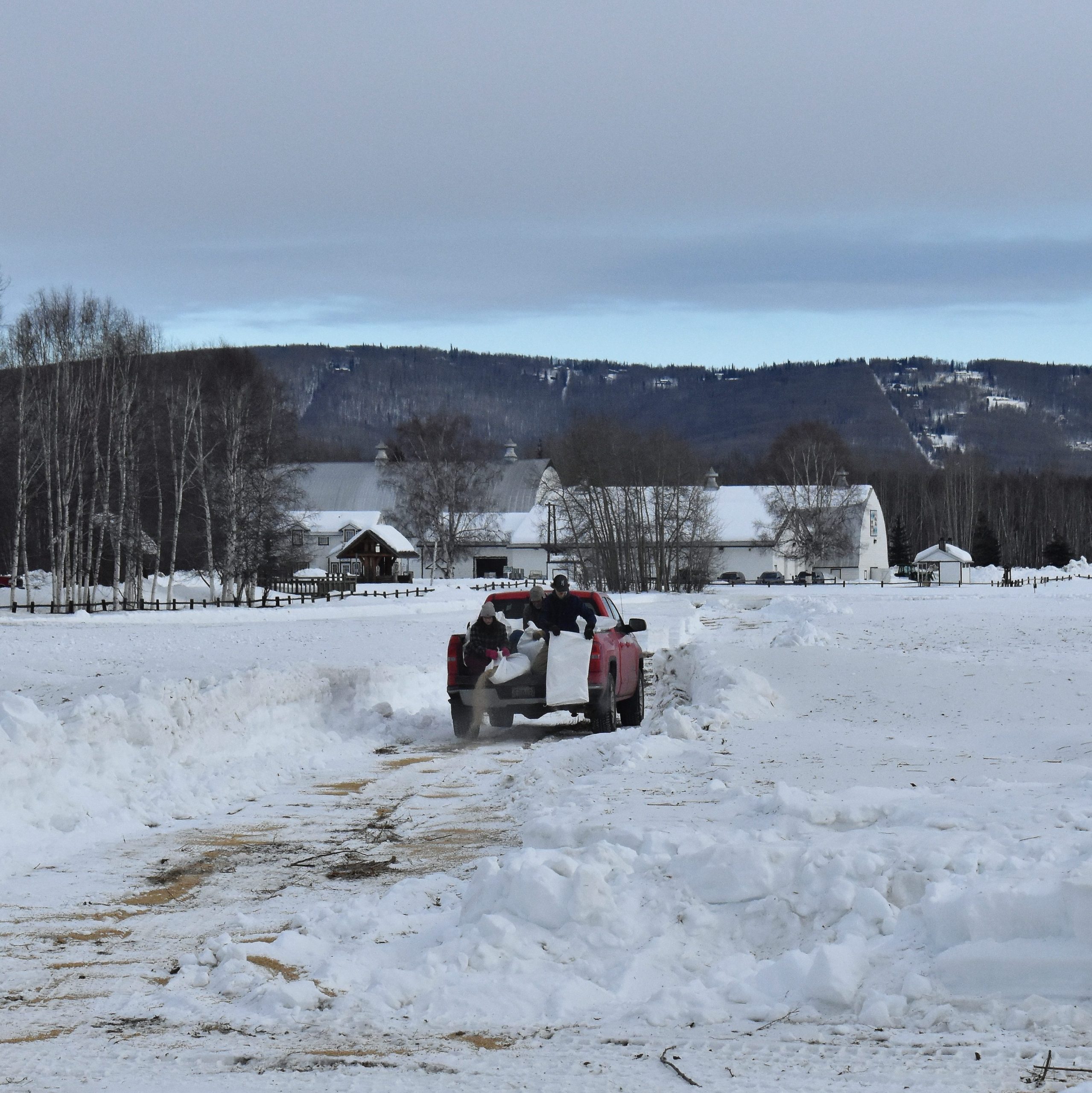
Creamer’s Field Migratory Waterfowl Refuge’s multiple wetlands, meadow, and boreal forest habitats make this space unique and appealing to all sorts of wildlife. The Refuge is managed to protect and enhance wildlife habitat, with special emphasis on waterfowl and other migratory birds, to promote conservation of wildlife, and to provide for compatible public uses. In 1988, ADF&G entered into a cooperative agreement with the Fairbanks International Airport, the Department of Transportation and Public Facilities, UAF School of Agriculture, US Army Corps of Engineers, and USFWS to decrease attractiveness of birds to the airport and increase the attractiveness of Creamer’s Refuge. The airport contributes thousands of dollars to managing the refuge to make it appealing for migratory birds. In addition to helping pay for farming the fields and building ponds, they plough the snow in the front viewing field each spring to speed snow melt and provide grain that is spread by the local Borealis Kiwanis volunteer group.
Over the decades, continual farming plans and habitat improvements were made to make Creamer’s Field more appealing for waterfowl. The Alaska State Waterfowl Enhancement Fund and Ducks Unlimited helped construct six waterfowl ponds and a large five-acre pond for Sandhill Crane roosting in the forested northeastern area of the refuge. With equipment and operators from the Fairbanks International Airport in the 1990s, three ponds were built in the front viewing field and west field to enhance migratory bird habitat.
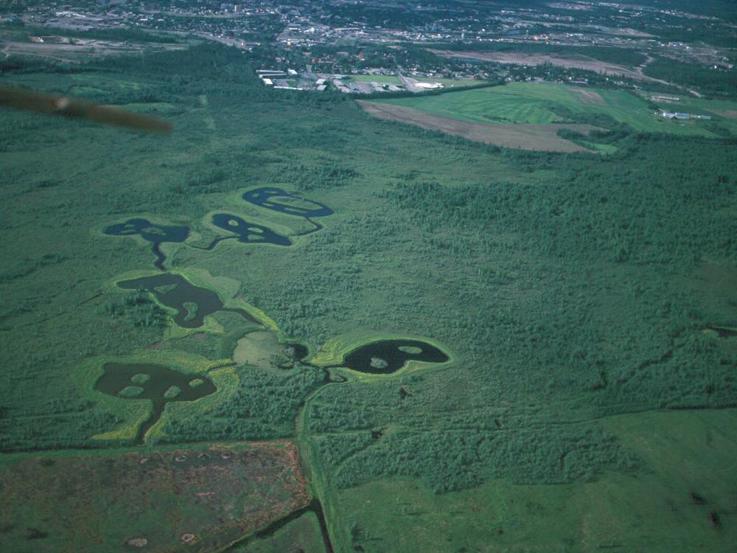
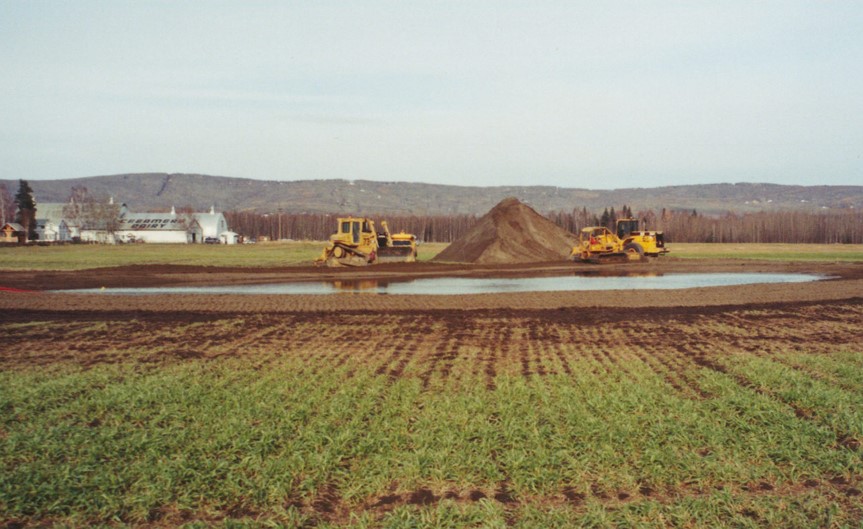
Meet Nate LaShomb
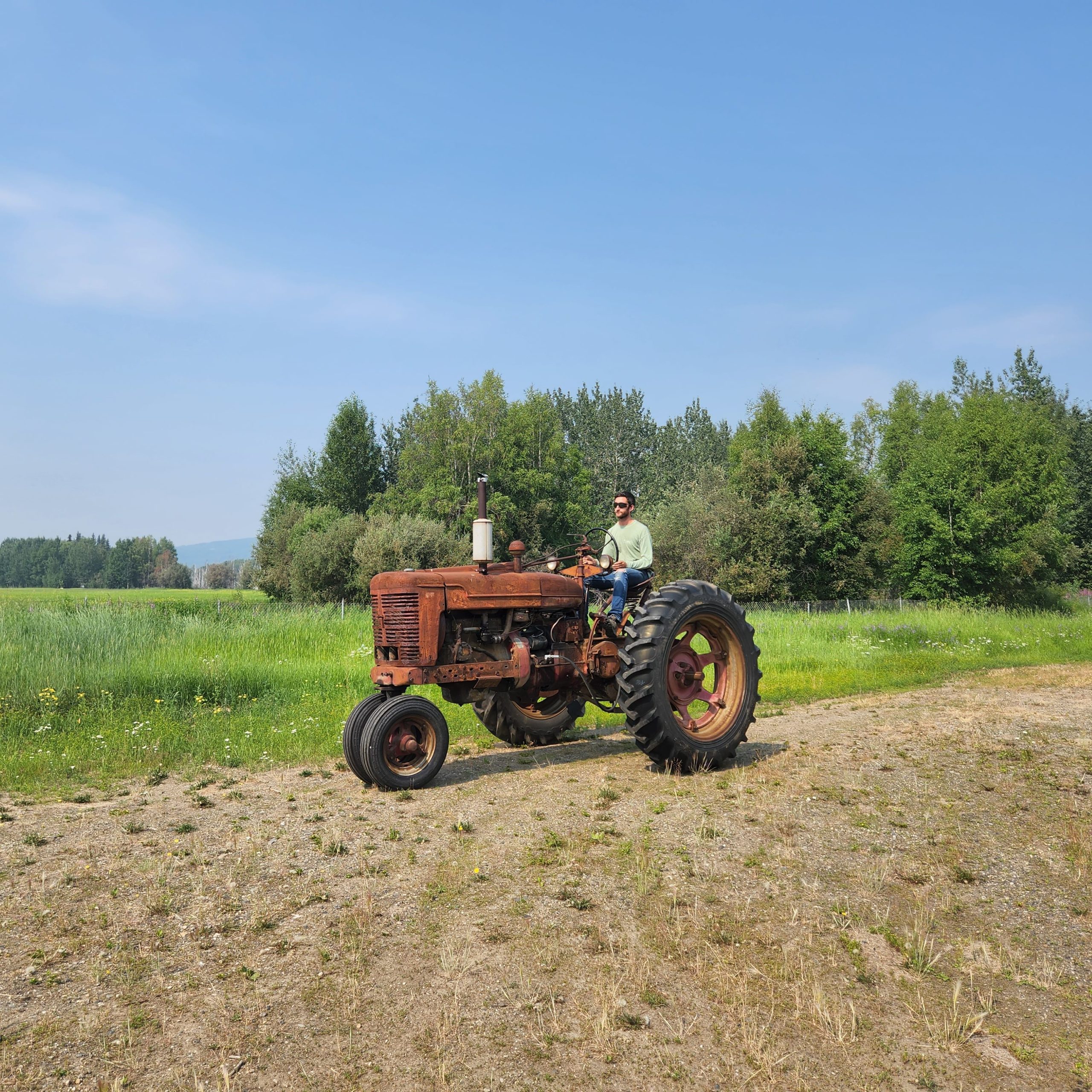
Farming on the refuge is currently done by ADF&G Wildlife Technician, Nate LaShomb. Originally from upstate New York, Nate has a bachelor’s degree in Conservation Biology from the State University of New York School of Environmental Science & Forestry. His passion for wetlands and waterfowl hunting led him to a career in waterfowl conservation. This passion took him all over the country researching waterfowl in North Dakota, California, Wyoming, Louisiana, and Alaska. He came out to Alaska in the spring of 2018 to work on a long-term black brant nesting ecology project with the University of Alaska Fairbanks on the Yukon-Kuskokwim National Wildlife Refuge. In 2022, he started here at Creamer’s Field Migratory Waterfowl Refuge bringing his years of experience in waterfowl research and habitat enhancement. In addition to his agricultural work here on the refuge, Nate leads the fall waterfowl banding operation in August with the cooperation of other ADF&G staff, the U.S. Fish & Wildlife Service, and the University of Alaska Fairbanks.
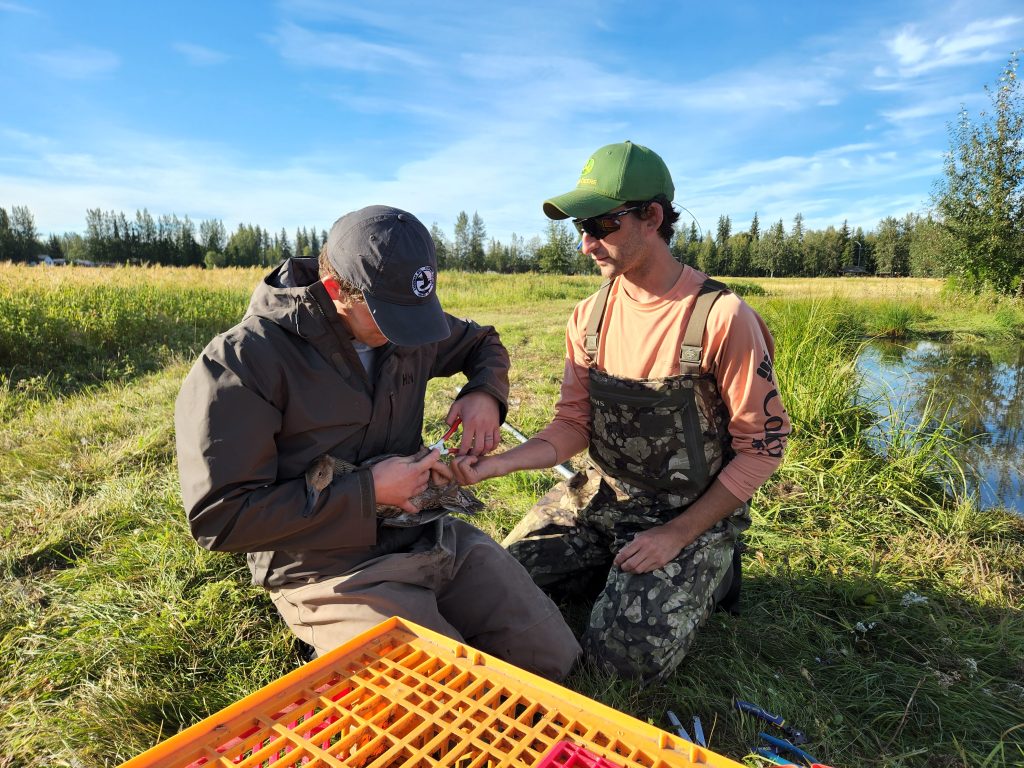

Present-day Planting
You can observe Nate out in the fields on the tractor during the summer months preparing the fields for the seasonal bird migration. Approximately 200-acres of fields are actively farmed with a rotation of mature barley, sprouting barley, brome grass, fallow, oats, and peas for waterfowl and crane foraging. The ADF&G 2024 Cultivation Plan for Creamer’s Field is shown in the map below.
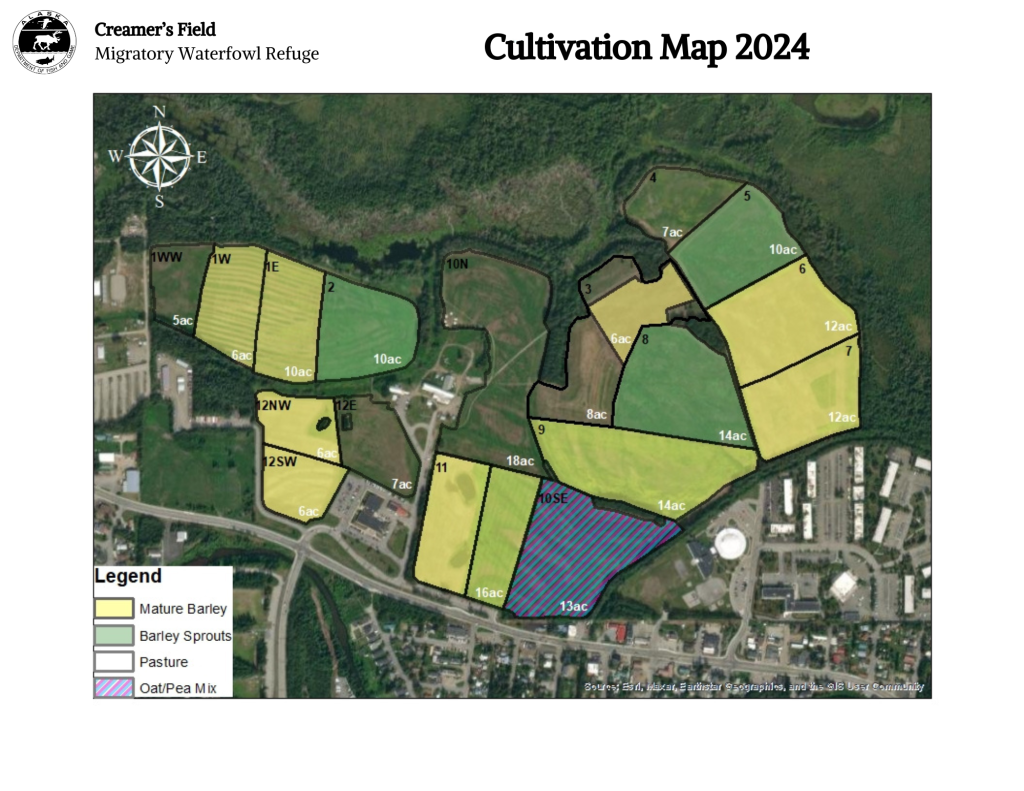
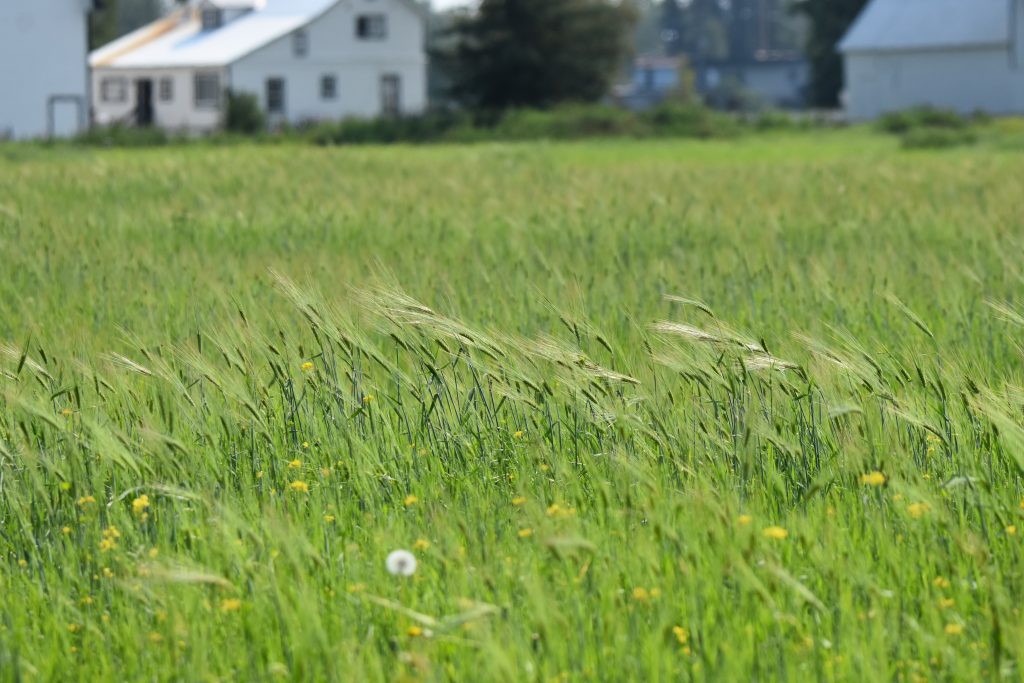
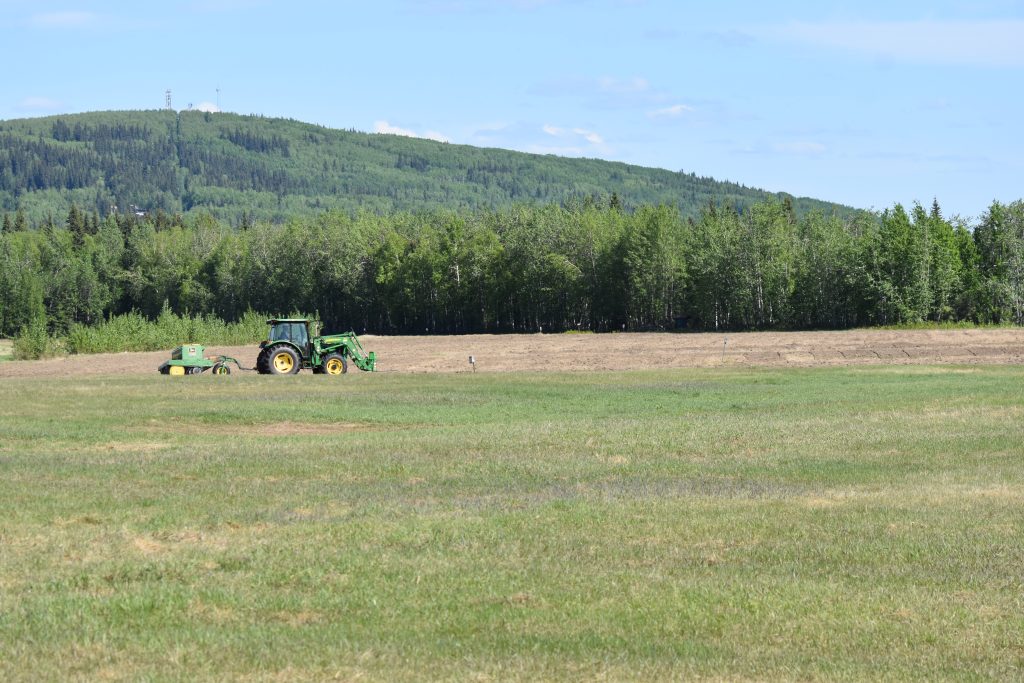
The health and longevity of the fields is vital to the planting operations. Soil samples from the fields are taken, and fields are occasionally planted with brome grass instead of barley for 2-3 years and replanted with barley when nutrient levels and organics have stabilized or increased. Fertilizer is regularly spread and the green crops, brome grass and fallow, are routinely tilled as green manure to increase the soil organic matter and to recycle nutrients.

Another way of recycling nutrients is through prescribed burns. Each year, the Alaska Department of Natural Resources Division of Forestry conducts controlled burns on the refuge fields to reduce vegetation buildup, enhance grass and sedge growth to recycle nutrients, to train wildland firefighters, and to demonstrate to the public the ecological role of wildfires.
Fall Migration Culmination
The hard summer work pays off as thousands of Sandhill Cranes and waterfowl gather in the refuge fields in August and September, feasting on the mature and sprouting grains. Creamer’s Field Migratory Waterfowl Refuge is abuzz with activity of bird research, bird viewing, and bird festivities of the Tanana Valley Sandhill Crane Festival to close out the busy summer. As autumn approaches, these birds will leave the Interior and make their way down to the Lower 48 and beyond. The flocks will seek out other refuges, agricultural sites, or appealing open areas to rest and refuel on their long journeys.
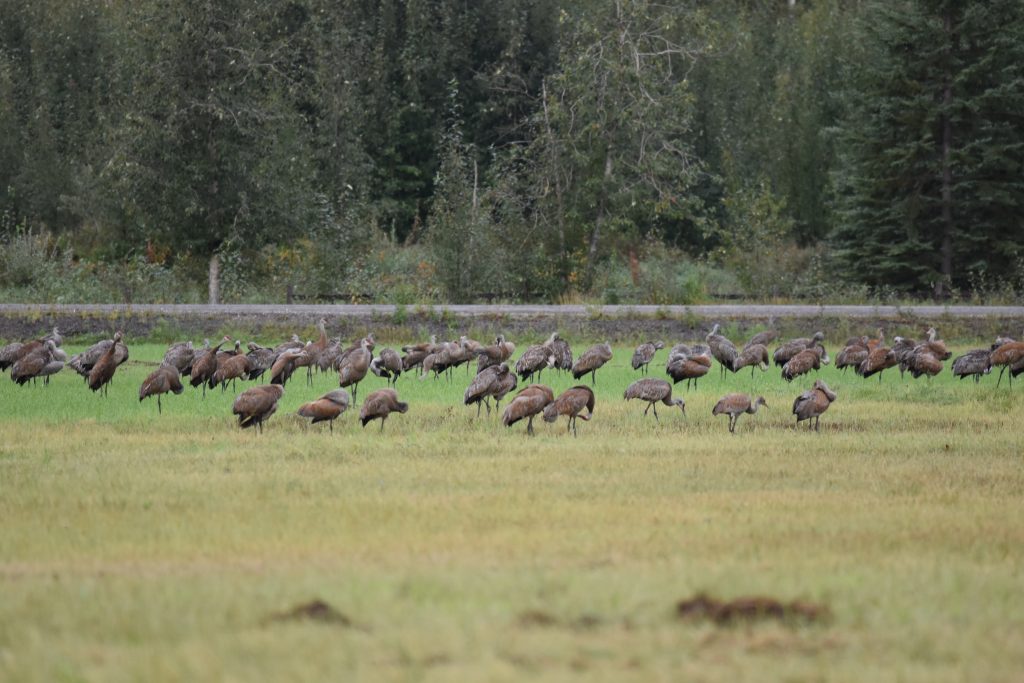
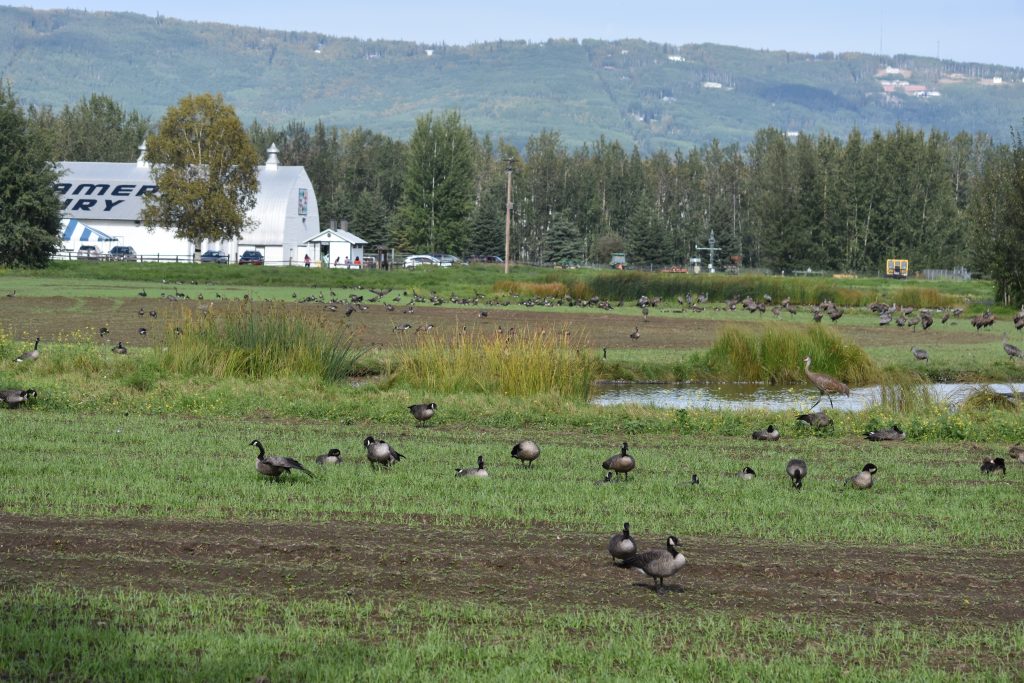
As the last of the migratory birds clear the sparse treetops of autumn heading south, the hustle and bustle of summer has settled. Just as the former dairy farmers prepared their cow herd and feed stores for the incoming winter ahead, the resident wildlife on the refuge prepares for the cold, dark, and long season. Refuge staff look back at the successes and setbacks of the planting process and the resulting masses the bounty brought. And the community will prepare a cultivation plan for the next summer as the migrants are sure to return to these sprawling fields once more.
Resources:
Boeck, Laurie. “Creamer’s Refuge Management and Operations.” Alaska Department of Fish and Game. 2009.
Lewis, Robin. “The History of Creamer’s Dairy, Fairbanks, Alaska.” The Tanana-Yukon Historical Society, Alaska Magazine, and the National Trust for Historic Preservation, 1990.
Information and photos compiled by Melanie Graeff, the Programs & Events Coordinator with the Friends of Creamer’s Field.

